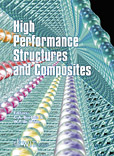Increasing The Wettability Of EVA Trough A Laboratory Glow Discharge Cold Plasma Reactor Treatment
Price
Free (open access)
Transaction
Volume
59
Pages
10
Published
2002
Size
498 kb
Paper DOI
10.2495/HPS020621
Copyright
WIT Press
Author(s)
C. Leone, V. Lopresto, G. Caprino & I. De Iorio
Abstract
A plasma technique was applied to superficially modify ethylene-vinyl-acetate (EVA) under form of flat sheets, using a laboratory reactor, in order to increase the wettability of the material. The following parameters were varied, in order to assess their influence on wettability: a) exposure time; b) air flow rate; c) voltage. Among the parameters studied, the most important in determining the wettability was the treatment time. The air flow rate and voltage were far less effective, despite each of these parameters was allowed to vary within a quite large range. The variation m the wettability with exposure time followed a trend well described by a sigmoidal curve: negligible variations in the treated surface were recorded within the first three minutes, whereas the wettability strongly increased afterwards, achieving its maximum value after about five minutes. Tests were also performed to verify the stability of the treatment after exposure in air at ambient temperature. To this aim, the variation of wettability after the treatment was measured at predefined time intervals. It was found that the effect of plasma exposure is rapidly loosen, with the wettability coming back to the original untreated value within about 15 mm. The experimental data showed that the characteristic time of decay depends on both the air flow rate and the voltage used during the plasma treatment. In particular, higher voltages and gas flow rates result in longer decay times. A semi-empirical law, assuming an exponential decay of the wettability with time, was assessed.
Keywords





